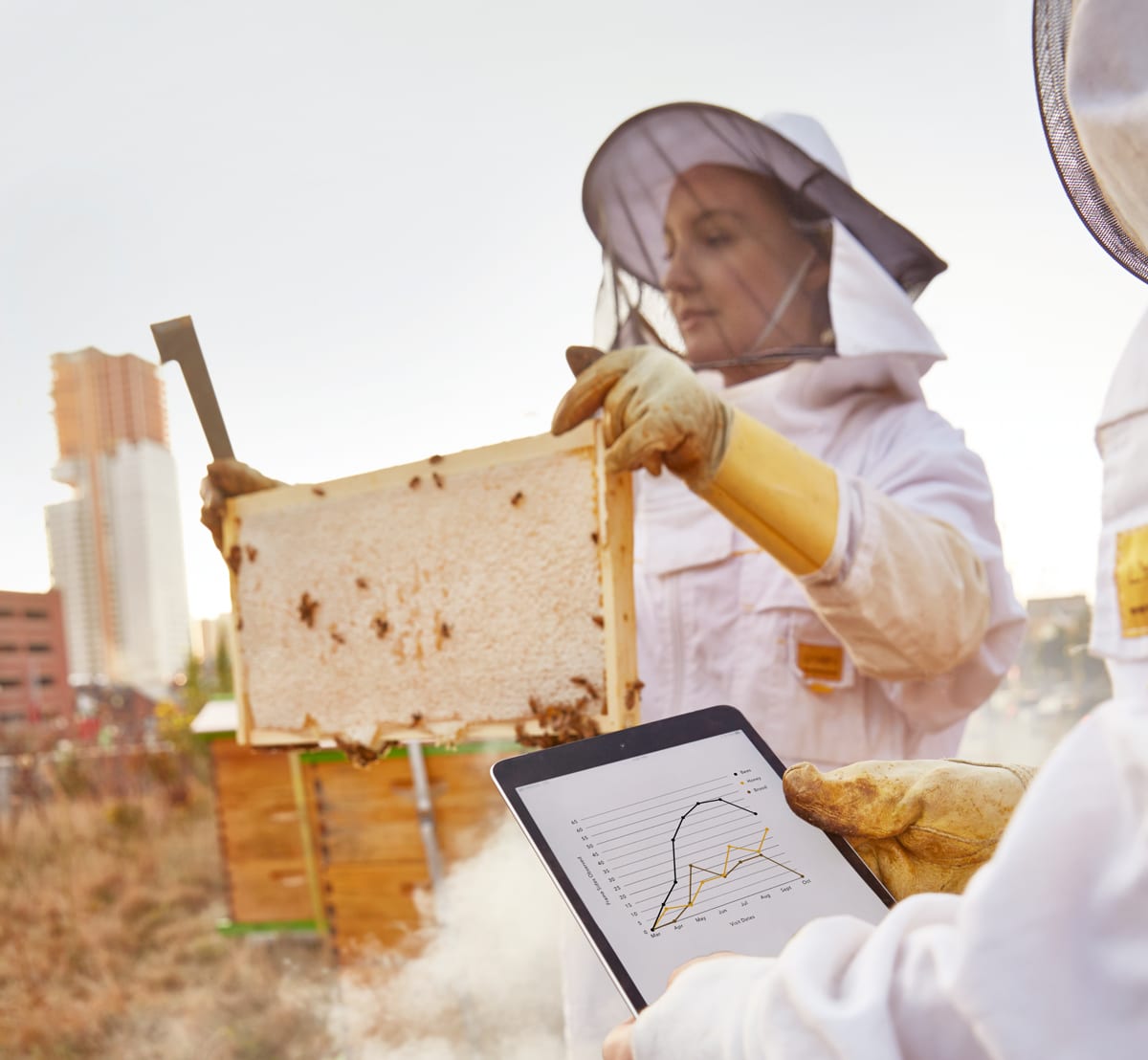Making Sustainability Sweet: Beehives at JPMorgan Chase
Small Bees, Big Impact
JPMorgan Chase has made a commitment to pollinator health by working with The Best Bees Company to install 40 data-yielding beehives across the US. The Best Bees’ approach to beekeeping includes expert care and data collection, ensuring quality service while improving the health of bees nationwide. This valuable partnership will provide insight into pollinator health while bolstering the bee population.
JPMorgan Chase Beehives with Best Bees
Newark, DE: 4
Jersey City, NJ: 4
Wilmington, DE: 4
Palo Alto, CA: 4
Plano, TX: 4
Chicago, IL: 4
Columbus, OH: 4
Tempe, AZ: 8
Denver: 4
40 DATA-YIELDING BEEHIVES
9 locations
4 million bees
~400 lbs of honey
The Best Bees Approach
Our data-driven approach defines state-of-the-art beekeeping by implementing the best beekeeping practices for data collection.
At every beehive visit, our team of beekeepers – from DC to LA – collect standardized data from our client hives. This is then shared with our internal staff scientists as well as research partners at NASA, Google, and MIT.
The Data Shows:
- Where bees are thriving and why
- How to breed healthy queens
- The biodiversity of our local habitats


Facts about bees, honey, and more.
- Honey is more than a sweetener! It is a natural prebiotic, meaning it promotes the growth of good bacteria in our guts. It also has anti-microbial properties, making it a trusted topical treatment or soothing face mask ingredient.
- When honey bees swarm, they are at their most docile. The image we have of an angry cloud of bees, chasing cartoons or characters on television, created a false narrative of this natural phenomenon. Swarms are completely natural and not dangerous – this is actually how colonies reproduce to form new colonies when they've outgrown their home or have become too populated.
- There are 10,000 bees in each beehive at the beginning of a season and 50,000 at the height of the season.
- Honey bees are essential pollinators, responsible for 1/6th of our planet's flowering plant species. A single bee can visit up to 5,000 flowers per day and may cumulatively travel 500 miles during its lifetime.
- Honey bees are an indicator species. Their social nature makes them easy to study and an incredible resource for understanding the nature and health of our native pollinators. To learn more about how native bees and honey bees coexist, head to our blog!
Planting for Pollinators
Change starts in your backyard. The easiest and most efficient way to save the bees is by planting a flower! Native plants provide food and shelter for pollinators of all kinds. Let your yard go wild. Avoid over-manicuring of outdoor spaces and steer clear of chemicals or pesticides. We can all help improve the green-ness of our local ecology no matter where we are, no matter your age or ability.

Helpful Resources:
Take Action
Honey Balsamic Roasted Summer Vegetables
Prep Time: 15 minutes; Cook Time: 20 minutes; Servings: 4
Ingredients
- 1 large clove garlic, minced
- 1 tablespoon balsamic vinegar
- 1 tablespoon honey
- 2 tablespoons kosher salt
- ground black pepper to taste
- 1 medium zucchini cut into 1/2" half moons
- 1 medium yellow squash cut into 1/2" half moons
- 1 sweet bell pepper cut into 1/2" pieces
- 2 cups assorted cherry tomatoes
- 1 cup fresh mozzarella packed in water cut into 1/2" chunks
- 1/4 cup basil thinly sliced into chiffonade
Instructions
- Preheat the oven to 400 degrees.
- Dressing: in a small bowl, whisk together teh garlic, balsamic vinegar, honey, olive oil, kosher salt, and pepper. Set aside.
- Place the cut zucchini, squash and bell pepper on the sheet pan. Add whole cherry tomatoes. Drizzle dressing over the vegetables and toss to coat. Spread the vegetables into a single layer and cook for 10 minutes in the oven.
- Remove the pan from the oven, toss the vegetables with a spatula and return to the oven. Roast vegetables for an additional 10-15 minutes or until they are softened, but there's still a juiciness at the bottom of the sheet pan. When vegetables are done, remove from oven and let come to room temperature.
- Transfer the vegetables to a medium bowl and add the mozzarella and basil. Toss to combine and serve at room temperature.


